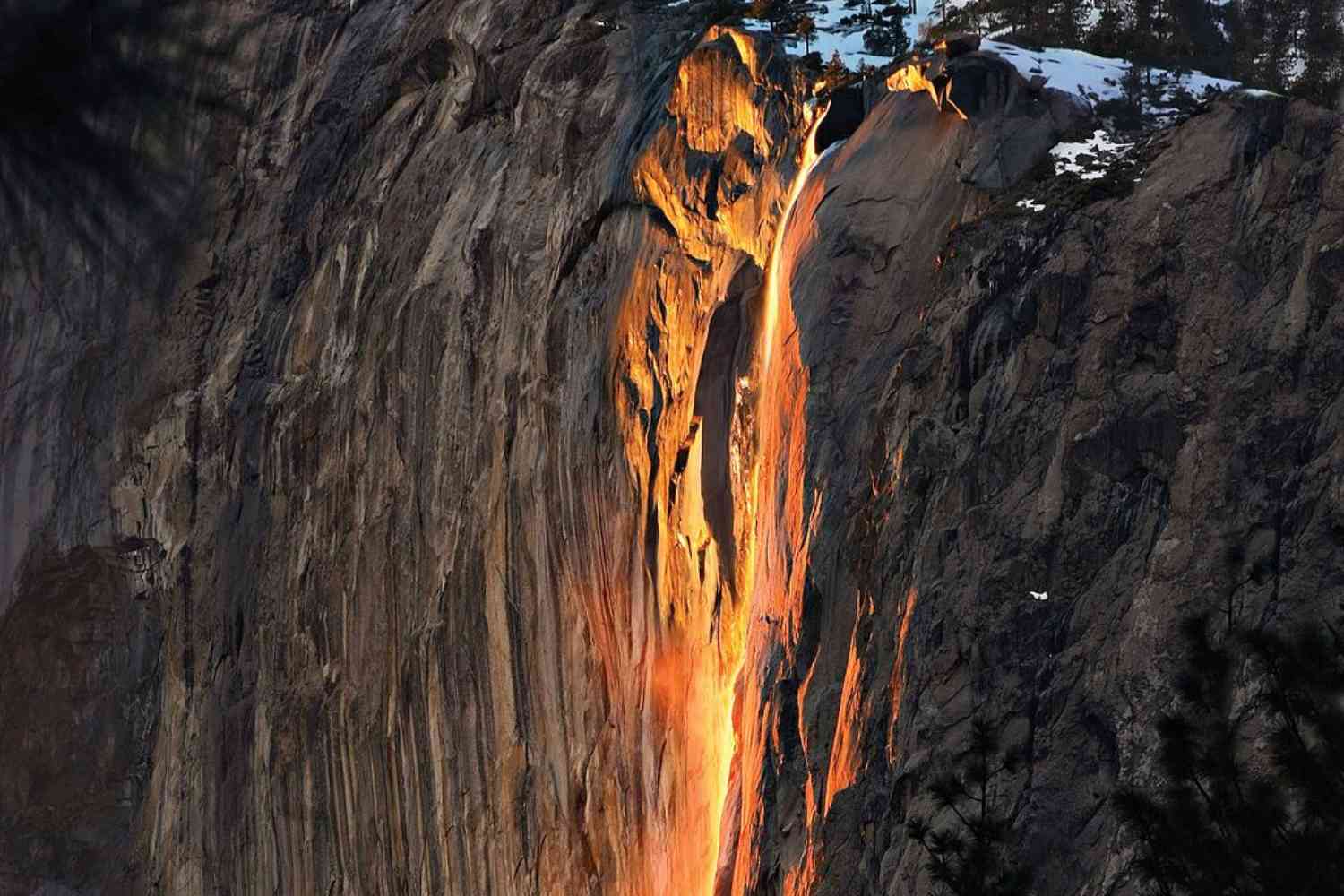Horsetail Falls on certain days of the year transforms into a river of glowing light with red-orange hues due to the angle of the setting sun.

@Wcwoolf/Wikipedia
Every year, mid to late February, California’s Yosemite National Park is the setting for one of the world’s most captivating natural wonders: the golden river of light that is Horsetail Fall. Nicknamed “Firefall,” the phenomenon is only seen when atmospheric and environmental factors align in just the correct combination to create a stunning optical illusion for viewers.
Horsetail Fall is a seasonal waterfall that cascades down the east face of El Capitan, one of Yosemite’s most iconic mountains. For most of the year, this waterfall can be eclipsed by other more spectacular falls in the park.
But on a few afternoons in February, when the sun dips at a very precise angle, the light catches the waterfall, and the water starts to glow red-orange, giving the impression that a river of lava is spilling over the cliff face.
How to observe this effect and where to go
Firefall can only be seen for a few minutes a day and requires a combination of ideal conditions: the waterfall must be flowing, the sky must be cloudless, and the sun angle must be correct. Even a little cloud cover or mist can ruin the visual effect. Since it is so rare and so spectacular, Firefall attracts thousands of visitors and photographers annually.
In recent years, the growing number of visitors has led park authorities to implement measures to manage crowds and maintain the environment surrounding it. Since 2023, weekend visitors in February are required to book a place to gain access to Yosemite Valley. Bookings are made online, and only a few vehicles are permitted, which manages traffic and minimizes environmental degradation.
In order to view the Firefall, the best place is the El Capitan Picnic Area. The view of the waterfall is ideal from here, and onlookers can appreciate the glowing effect to its fullest. Early arrival is a must, however, since onlookers begin to find their places by early afternoon. Due to the possibility of cold temperatures, visitors are advised to wear warm clothing and bring all the essentials to endure the wait outside.
For people who are unable to get there in person, Yosemite National Park offers live webcams that display images of the waterfall. Furthermore, documentaries and videos online allow people to view this incredible natural phenomenon remotely.
